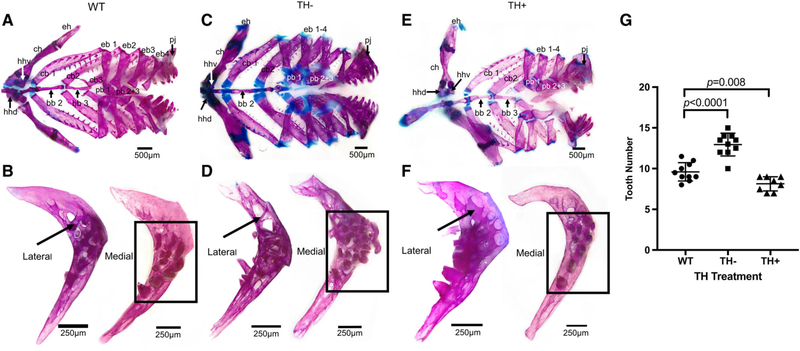Fig. 4.
Cleared and stained branchial basket from WT, TH−, and TH+ zebrafish. (A, C, and E) Dorsal view of the branchial basket. Note the more prominent cartilaginous junctions in TH−. (B, D, and F) Lateral and medial view of the pharyngeal jaws. Bold arrows indicate the supporting struts of the pharyngeal jaws. Black boxes surround the teeth. (G) WT showed between 7 and 12 teeth on each pharyngeal jaw (average = 9.6, N = 10 fish), TH− showed between 9 and 17 (average = 12.95, N = 10 fish) and TH+ showed between 7 and 10 (average = 8.1, N = 8 fish). The presence of TH inhibits pharyngeal teeth, as TH− jaws had significantly more teeth (two tailed t test P = 1.4e-05) and TH+ had significantly fewer teeth (P = 0.0079) than WT jaws. Further, teeth were more robustly ankylosed to the ceratobranchial in TH+. Abbreviations: bb, basibranchial; cb, ceratobranchial; ch, ceratohyal; eb, epibranchial; eh, epihyal; hhd, hypohyal dorsal; hhv, hypohyal ventral; pb, pharyngobranchial. Bones within a series are labeled with the corresponding numbers (e.g., pb 1, pb 2 + 3).

